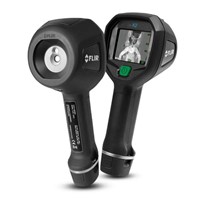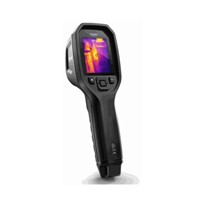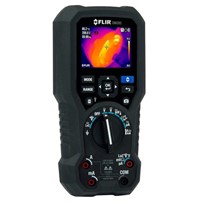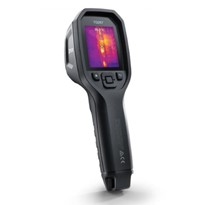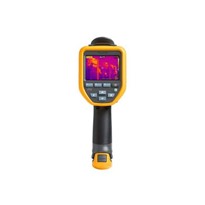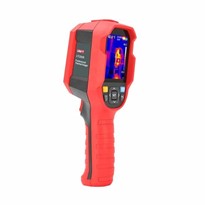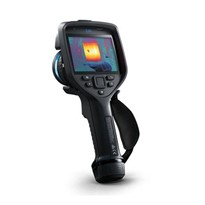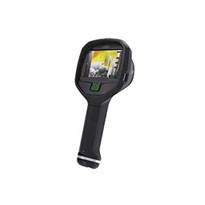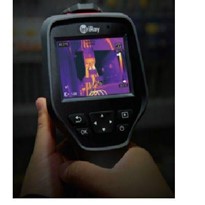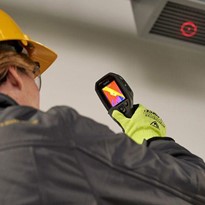In temperature measurement it is crucial that the temperature readings are correct to ensure the efficiency, safety, and process of your operations flow correctly.
Thermal imaging cameras detect temperature by recognising and capturing different levels of infrared light. The light is invisible to the naked eye but can be felt as heat if the intensity is high enough. All objects emit some kind of infrared radiation, and it’s one of the ways that heat is transferred. The hotter an object is, the more infrared radiations emits which can be convert into an image that we can then see with our own eyes.
A key benefit of thermal imaging technology is that it enables you to quickly identify areas of concern, the cameras can pick up energy leaks, machinery overheating, faulty electrical equipment, fire survival faults once detected you are able to prevent problems before they become bigger issues. Thermal imaging cameras can also be a tool used for predictive regular maintenance routines.
There are a wide range of thermal imaging cameras available, from compact and portable devices to larger complex industrial application units. There is also a wide range of accessories and software options to assist the capabilities of thermal imaging cameras, which makes it easier to receive the information needed to analyse results effectively.
Although all thermal imaging technologies have advantages there are also limitations to the technologies, certain environments such as high levels of reflective surfaces, high ambient light, and some surfaces do not emit enough infrared radiation which can obscure the reading making in unreadable.
Where did thermal imaging camera originate?
It is unclear the origins of thermal imaging. There have been numerous accounts of thermal imaging by other names from the 1800’s but no confirmed inventor. The thermal imaging cameras used today are based on technology that was originally developed for the military. In 1929, Hungarian physicist Kálmán Tihanyi invented the infrared-sensitive (night vision) electronic television camera for anti-aircraft defence in Britain. The first American thermographic cameras developed were infrared line scanners. Thermal imaging in its present form was originally developed for military use during the Korean War
Where do we use thermal imaging?
Thermal imaging cameras have migrated into other fields and have found many uses.
- Electrical maintenance uses for thermal imaging are extensive. For example, power line technicians use thermal imaging to locate and pinpoint joints and parts that are at risk of overheating as they’re already emitting more heat than the stronger sections. They can also help spot loose connections or devices that are starting to fail. Pyrosales offer the InfiRay C series or M series which is best for this industry.
- Plumbers use thermal imagers to inspect sites of possible leaks, mainly through walls and pipes. Since the devices can be used at a distance, they’re ideal for finding potential problems in equipment that is either hard to reach or might otherwise pose safety issues to workers. Pyrosales offer the InfiRay C series or M series which is best for this industry.
- Mechanical and building construction technicians who work with thermal insulation use imaging to quickly identify leaks, which is important to maintain efficient temperature regulation in a building. At a glance, they can analyse a building’s structure and spot faults. Heat loss from walls, HVAC equipment, doors and windows are common thermal performance issues that are easily picked up by a thermal imager. Pyrosales offer the InfiRay C series or M series which is best for this industry.
- Animal and Pest management is a field which has a surprising number of uses for thermal imagers. They can help spot pests or animals in dark roof areas without having to climb up into them, and they can detect potential termite activity. Also, they’re commonly used to conduct wildlife surveys more easily in a totally non-invasive, non-intrusive manner. Pyrosales offer the InfiRay C series or M series which is best for this industry.
- Transport navigation gets significant benefits from thermal imaging, particularly when traveling at night. For example, maritime navigation uses it for clearly seeing other vessels, people, and obstructions during the night while out at sea. In recent years, cars have begun incorporating infrared cameras to alert drivers of people or animals beyond streetlights or the reach of their headlights. Pyrosales do not stock this product for this industry, but we can assist,
- Healthcare and medicine also have practical uses, such as to spot fevers and temperature anomalies. This has proven to be especially important in airports where these thermal imaging cameras can quickly and accurately scan all incoming or outgoing passengers for higher temperatures, which was crucial during recent outbreaks of diseases like SARS and Ebola. Additionally, thermal imagers have been proven to help diagnose a range of disorders associated with the neck, back and limbs, as well as circulatory problems. Pyrosales do not stock this product for this industry, but we can assist.
- Fire-fighters use thermal imaging to help them see through smoke, particularly in rescue missions when they’re searching for people in an otherwise obscured and dangerous environment. They also use thermal cameras for rapid identification of spot fires, so they can intervene before they spread. Pyrosales do not stock this product for this industry, but we can assist.
- Police and law enforcement agencies incorporate thermal imagers into their surveillance equipment, used for locating suspects especially at night, as well as to investigate crime scenes and for search and rescue operations. They’re superior to night-vision devices, as they don’t require any ambient light and are unaffected by bright lights, which is essential for tactical missions. Pyrosales do not stock this product for this industry, but we can assist.
Science and research are undoubtedly sectors that draw significant benefits from using thermal imagers, for accurate and precise visualisations of heat patterns such as dark side of the moon.
Other applications which use a thermal imaging camera include heating, ventilation and air conditioning installations, mould detection, quality assurance in processes such as glass manufacturing and many more.
Money saving is something you wouldn’t necessarily expect from a thermal imaging device, but when you think about everything it can do, it makes sense. After the upfront cost of purchasing the device, they can undoubtedly save your business or home thousands of dollars or more in potential maintenance and repair costs that might incur if faults, leaks, or weaknesses were not identified earlier.
However, it’s important to recognise that while thermal imaging has all these applications, it’s often best to use additional instruments or tools when appropriate to confirm what you’re seeing. Additionally, it’s worth noting that thermal imaging cameras are unable to see through walls and objects, but rather, they only pick up what’s reflected off them.
Choosing and purchasing a high-quality thermal imaging
It’s crucial to use a high-quality product to ensure that you detect and record accurate measurements. A big difference between different types of thermal imagers are the resolution and clarity of the images they provide.
Here at Pyrosales we are proud to offer a wide range of Thermal imaging Cameras suitable for all kinds of applications, whether they be professional or hobbyist. Our suite of top-range thermal imagers is made by InfiRay, a globally active, high-tech company with an expertise in innovative measurement solutions that are guaranteed to meet your needs.
Thermal imaging is an impressive and compact method of identifying, measuring and visualising heat patterns, particularly in environments where there’s a lack of visible light. Armed with an effective and high-quality thermal imaging camera, there are a broad range of applications available, from industrial to health to research and science and so much more.


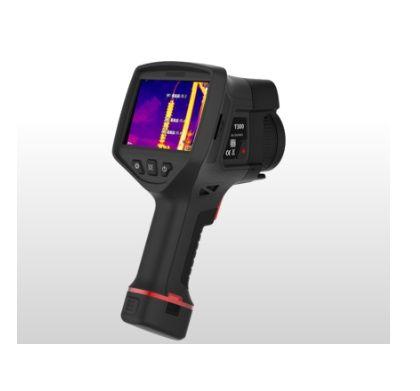

-160x160-state_article-rel-cat.png)
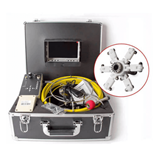
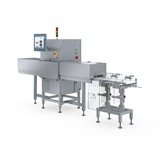
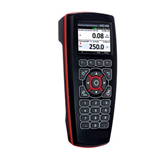

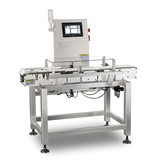
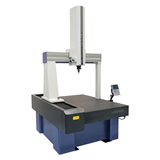
-160x160-state_article-rel-cat.jpg)

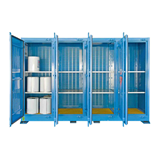
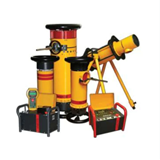
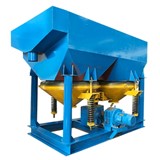
-160x160-state_article-rel-cat.png)

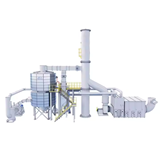




-160x160-state_article-rel-cat.png)




